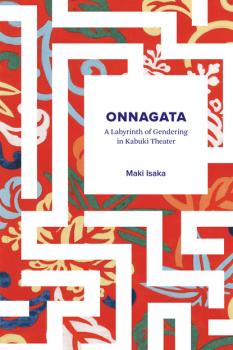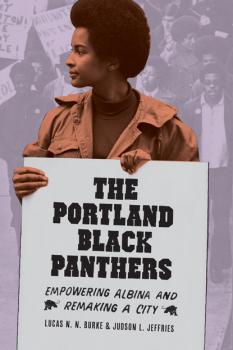Историческая литература
Различные книги в жанре Историческая литератураColonial Rule and Social Change in Korea, 1910-1945
Colonial Rule and Social Change in Korea 1910-1945 highlights the complex interaction between indigenous activity and colonial governance, emphasizing how Japanese rule adapted to Korean and missionary initiatives, as well as how Koreans found space within the colonial system to show agency. Topics covered range from economic development and national identity to education and family; from peasant uprisings and thought conversion to a comparison of missionary and colonial leprosariums. These various new assessments of Japan's colonial legacy may open up new and illuminating approaches to historical memory that will resonate not just in Korean studies, but in colonial and postcolonial studies in general, and will have implications for the future of regional politics in East Asia.
Emperor Hirohito and the Pacific War
This reexamination of the controversial role Emperor Hirohito played during the Pacific War gives particular attention to the question: If the emperor could not stop Japan from going to war with the Allied Powers in 1941, why was he able to play a crucial role in ending the war in 1945? Drawing on previously unavailable primary sources, Noriko Kawamura traces Hirohito�s actions from the late 1920s to the end of the war, analyzing the role Hirohito played in Japan�s expansion. Emperor Hirohito emerges as a conflicted man who struggled throughout the war to deal with the undefined powers bestowed upon him as a monarch, often juggling the contradictory positions and irreconcilable differences advocated by his subordinates. Kawamura shows that he was by no means a pacifist, but neither did he favor the reckless wars advocated by Japan�s military leaders.
Onnagata
Kabuki is well known for its exaggerated acting, flamboyant costumes and makeup, and unnatural storylines. The onnagata , usually male actors who perform the roles of women, have been an important aspect of kabuki since its beginnings in the 17th century. In a “labyrinth” of gendering, the practice of men playing women’s roles has affected the manifestations of femininity in Japanese society. In this case study of how gender has been defined and redefined through the centuries, Maki Isaka examines how the onnagata ’s theatrical gender “impersonation” has shaped the concept and mechanisms of femininity and gender construction in Japan. The implications of the study go well beyond disciplinary and geographic cloisters.
Humanizing the Sacred
In recent years, global attention has focused on how women in communities of Muslims are revitalizing Islam by linking interpretation of religious ideas to the protection of rights and freedoms. Humanizing the Sacred demonstrates how Sunni women activists in Malaysia are fracturing institutionalized Islamic authority by generating new understandings of rights and redefining the moral obligations of their community. Based on ethnographic research of Sisters in Islam (SIS), a nongovernmental organization of professional women promoting justice and equality, Basarudin examines SIS members' involvement in the production and transmission of Islamic knowledge to reformulate legal codes and reconceptualize gender discourses. By weaving together women's lived realities, feminist interpretations of Islamic texts, and Malaysian cultural politics, this book illuminates how a localized struggle of claiming rights takes shape within a transnational landscape. It provides a vital understanding of how women «live» Islam through the integration of piety and reason and the implications of women's political activism for the transformation of Islamic tradition itself.
Black Women in Sequence
Black Women in Sequence takes readers on a search for women of African descent in comics subculture. From the 1971 appearance of the Skywald Publications character “the Butterfly” – the first Black female superheroine in a comic book – to contemporary comic books, graphic novels, film, manga, and video gaming, a growing number of Black women are becoming producers, viewers, and subjects of sequential art.As the first detailed investigation of Black women’s participation in comic art, Black Women in Sequence examines the representation, production, and transnational circulation of women of African descent in the sequential art world. In this groundbreaking study, which includes interviews with artists and writers, Deborah Whaley suggests that the treatment of the Black female subject in sequential art says much about the place of people of African descent in national ideology in the United States and abroad.For more information visit the author's website: http://www.deborahelizabethwhaley.com/#!black-women-in-sequence/c65q
Writing the South Seas
Postcolonial literature about the South Seas, or Nanyang, examines the history of Chinese migration, localization, and interethnic exchange in Southeast Asia, where Sinophone settler cultures evolved independently by adapting to their «New World» and mingling with native cultures. Writing the South Seas explains why Nanyang encounters, neglected by most literary histories, should be considered crucial to the national literatures of China and Southeast Asia.
The Portland Black Panthers
Portland, Oregon, though widely regarded as a liberal bastion, also has struggled historically with ethnic diversity; indeed, the 2010 census found it to be “America’s whitest major city.” In early recognition of such disparate realities, a group of African American activists in the 1960s formed a local branch of the Black Panther Party in the city’s Albina District to rally their community and be heard by city leaders. And as Lucas Burke and Judson Jeffries reveal, the Portland branch was quite different from the more famous—and infamous—Oakland headquarters. Instead of parading through the streets wearing black berets and ammunition belts, Portland’s Panthers were more concerned with opening a health clinic and starting free breakfast programs for neighborhood kids. Though the group had been squeezed out of local politics by the early 1980s, its legacy lives on through the various activist groups in Portland that are still fighting many of the same battles.Combining histories of the city and its African American community with interviews with former Portland Panthers and other key players, this long-overdue account adds complexity to our understanding of the protracted civil rights movement throughout the Pacific Northwest.
Symbolic Immortality
Decades after its initial publication, Symbolic Immortality retains its status as the most comprehensive analysis of the mortuary practices of the Tlingit Indians of southeastern Alaska—or any other indigenous culture of the Northwest Coast. This updated and expanded edition furthers our understanding of the potlatch ( koo.éex’ ) as a total social phenomenon, with emotional and religious as well as economic and sociopolitical dimensions. The result is a major contribution to both Northwest Coast ethnology and theoretical literature on the anthropology of death.
Building the Golden Gate Bridge
Silver Award Winner, 2016 Nautilus Book Award in Young Adult (YA) Non-FictionMoving beyond the familiar accounts of politics and the achievements of celebrity engineers and designers, Building the Golden Gate Bridge is the first book to primarily feature the voices of the workers themselves. This is the story of survivors who vividly recall the hardships, hazards, and victories of constructing the landmark span during the Great Depression.Labor historian Harvey Schwartz has compiled oral histories of nine workers who helped build the celebrated bridge. Their powerful recollections chronicle the technical details of construction, the grueling physical conditions they endured, the small pleasures they enjoyed, and the gruesome accidents some workers suffered. The result is an evocation of working-class life and culture in a bygone era.Most of the bridge builders were men of European descent, many of them the sons of immigrants. Schwartz also interviewed women: two nurses who cared for the injured and tolerated their antics, the wife of one 1930s builder, and an African American ironworker who toiled on the bridge in later years. These powerful stories are accompanied by stunning photographs of the bridge under construction. An homage to both the American worker and the quintessential San Francisco landmark, Building the Golden Gate Bridge expands our understanding of Depression-era labor and California history and makes a unique contribution to the literature of this iconic span.
Desert Exile
After the attack on Pearl Harbor, everything changed for Yoshiko Uchida. Desert Exile is her autobiographical account of life before and during World War II. The book does more than relate the day-to-day experience of living in stalls at the Tanforan Racetrack, the assembly center just south of San Francisco, and in the Topaz, Utah, internment camp. It tells the story of the courage and strength displayed by those who were interned.Replaces ISBN 9780295961903









